Pancit Bihon Guisado with rice noodles, meat, shrimp, and vegetables is sure to be a family favorite. Perfect for everyday meals and special occasions!
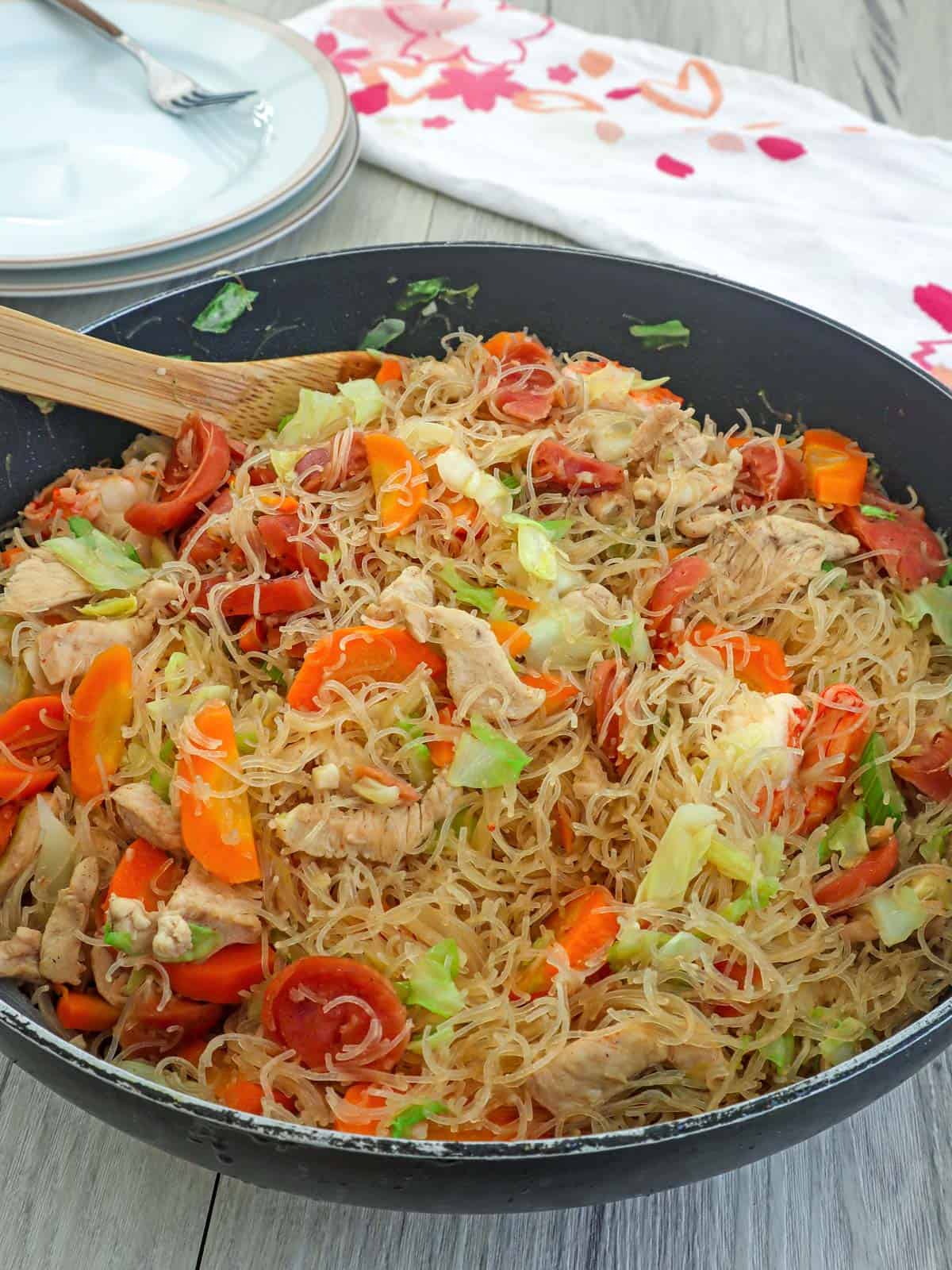
Pancit bihon guisado is a Filipino noodle stir-fry popular for everyday meals and special occasions. The dish is often served on birthdays as the long noodle strands signify long life in Asian culture.
A delicious hodge-podge of rice noodles, meat, shrimp, and vegetables, it's a one-pot meal guaranteed to be a crowd-pleaser!
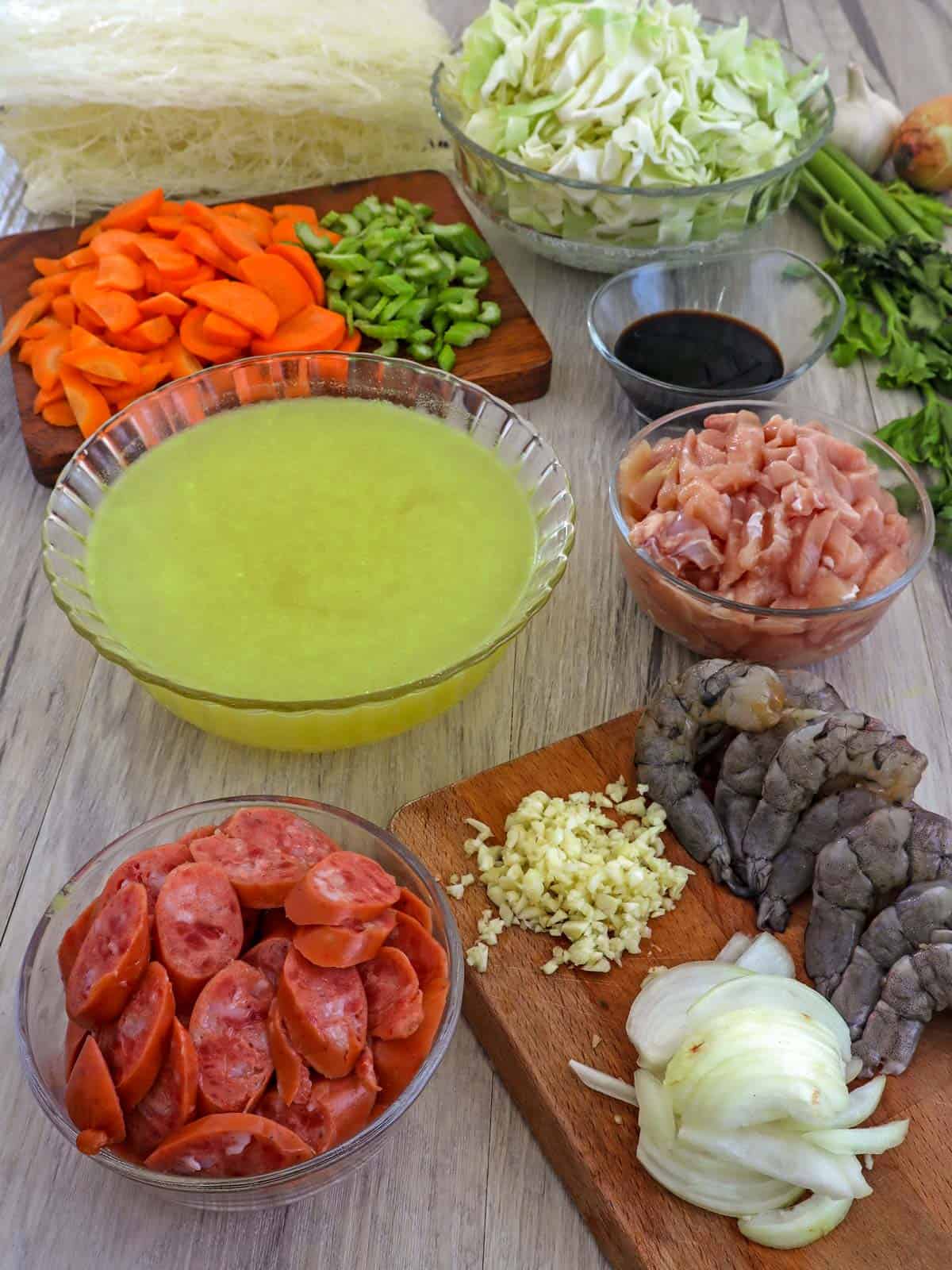
Pancit ingredients
There are so many ways to make this dish; every cook has his or her own delicious spin. Check out my ingredient suggestion list below and swap or add your choice of mix-ins.
- Sweet sausage hamonado or lap chong (Chinese sausage)
- Chicken
- Diced pork
- Shrimp
- Chicken, pork, or beef liver
- Fishballs, squid balls, meatballs, kikiam, fish cakes
- Carrots
- Cabbage, napa cabbage
- Celery or kinchay
- Spring beans, snow peas
- Bean sprouts
- Shitake or ear wood mushrooms (tenga ng daga)
- Bell peppers
Cooking tips
- Parboil noodles in flavorful broth. While it's customary to soak the rice noodles in warm water to soften before cooking, I like to parboil the noodles in broth instead. This simple trick of submerging and BRIEFLY cooking the noodles in stock adds more depth of flavor. This is a very quick step and is only to loosen and slightly soften the strands as the noodles will finish cooking during the stir-fry process.
- Uniform sizes, even cooking. The secret of a successful stir-fry is how the ingredients are prepped and sliced. Cut your meat and veggies into uniform bite sizes so they'll cook fast and evenly.
- Use the right equipment. Another important component of a successful stir-fry is the cookware you use. A wok, of course, is the best for the job but any wide skillet with slanted sides will work as well. You might have to cook in batches if you don't have a big enough cookware to prevent spills (tossing all the ingredients can get pretty messy) and to ensure good distribution of ingredients.
- Use tongs. Stir-fry using tongs to help keep the noodles intact and lessen breakage.
- Do not overcook. Nothing ruins a good platter of pancit bihon in my opinion than mushy noodles and limp vegetables! Slightly undercook the vegetables during the initial stir-fry as they will continue to cook when the noodles are finished off.
- Cook on high heat. You want the ingredients to sear nicely and not overcook in the steam.
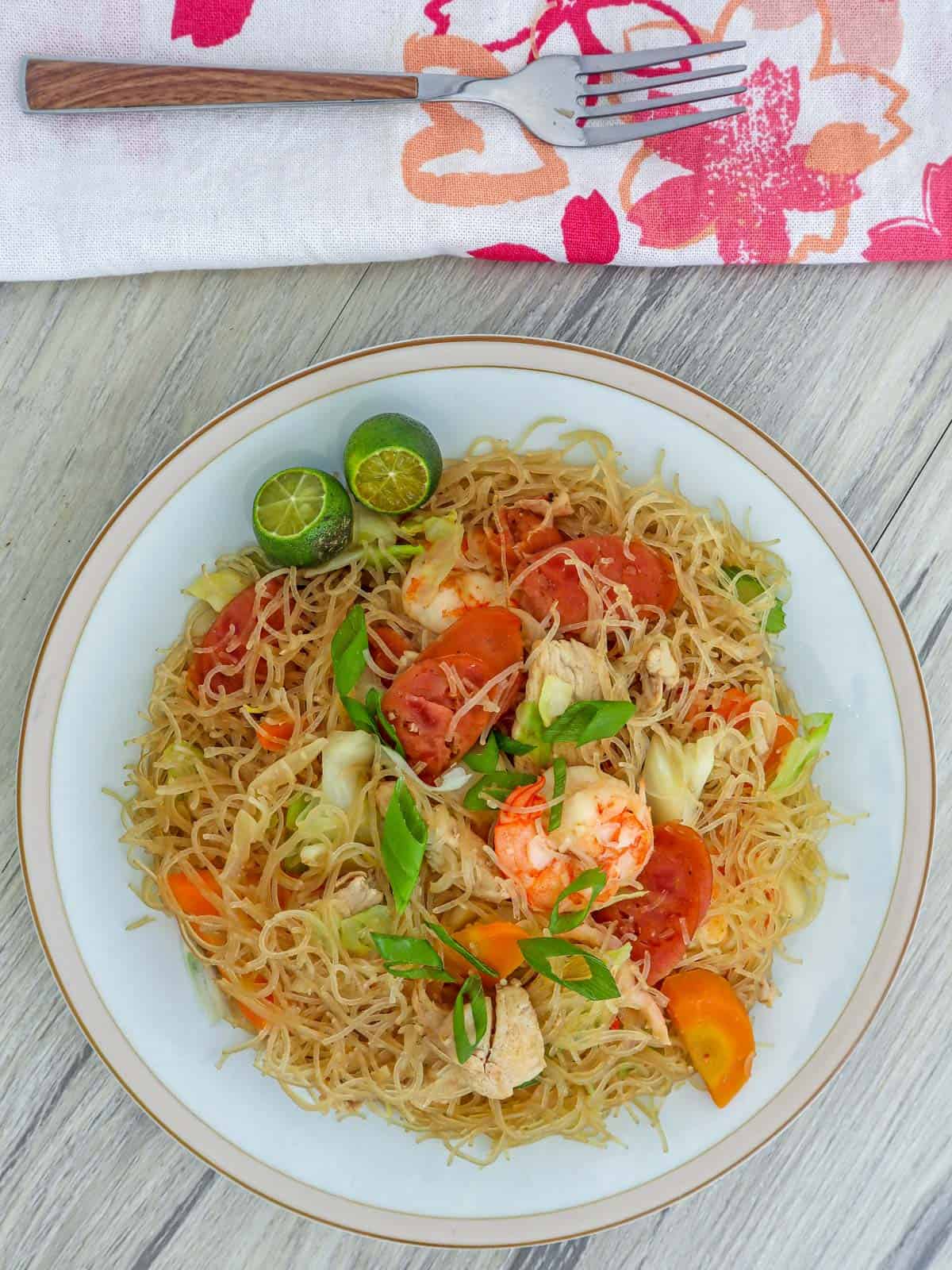
How to serve and store
- Pancit Bihon is traditionally served for special occasions, especially birthdays, as long noodles signify long life. It's also common to enjoy it as a midday snack or the main entree with pandesal, tasty bread, and steamed rice.
- Filipino-style stir-fried noodles are often enjoyed with a spritz of freshly-squeezed calamansi (or citruses such as lime or lemon) juice to brighten flavors.
- To store leftovers, allow to completely and transfer to a container with a tight-fitting lid. Refrigerate for up to 3 days.
- Reheat in the microwave at 1 to 2-minute intervals until completely heated, stirring well between intervals.
More noodle stir-fry recipes
Ingredients
- 4 cups chicken stock
- ¼ cup soy sauce
- 8 ounces rice noodles
- 2 tablespoons vegetable oil
- ½ pound large shrimp, peeled and deveined
- 16 ounces pork hamonado, cut thinly on a bias
- 1 onion, peeled and sliced thinly
- 2 cloves garlic, peeled and minced
- ½ pound boneless, skinless chicken breast or thigh meat, sliced thinly
- 2 large carrots, peeled and sliced thinly on a bias
- 2 stalks celery, sliced thinly on a bias
- 1 small cabbage, chopped
- salt and pepper to taste
- green onions, chopped
- calamansi or lemon, cut into wedges
Instructions
- In a large pot over medium heat, combine chicken stock and soy sauce. Bring to a boil.
- Submerge noodles into the liquid and cook, using tongs to loosen strands, for about 1 to 2 minutes or just until softened. Drain noodles and reserve about 1 ½ to 2 cups of the liquid.
- In a wok or wide skillet over medium heat, heat about 1 tablespoon oil. Add shrimp and cook for about 1 to 2 minutes or until color changes to pink. Remove from heat and drain on paper towels.
- Add pork hamonado and cook, stirring regularly, until they start to brown.
- Wipe down wok or skillet as needed and heat another tablespoon of oil. Add onions and garlic and cook until softened.
- Add chicken and cook, stirring regularly, for about 3 to 5 minutes or until lightly browned.
- Add carrots and celery and cook for about 30 to 40 seconds.
- Add cabbage and cook for about 30 to 40 seconds. Continue to cook until vegetables are tender yet crisp.
- Return shrimp and hamonado to the wok.
- Add noodles and reserved liquid in ½ cup increments. Gently toss and stir, adding more liquid as needed, until noodles are cooked yet firm to bite, vegetables are tender-crisp, and liquid is absorbed.
- Season with salt and pepper to taste. Transfer to serving platter and garnish with chopped green onions. Serve with calamansi wedges.
Notes
- Slightly undercook the vegetables during the initial stir-fry as they will continue to cook when the noodles are finished off.
- Stir-fry on high heat so everything sears nicely and won't overcook in the steam.
- Use tongs to help keep the noodles intact and lessen breakage.
Video

Nutrition Information
“This website provides approximate nutrition information for convenience and as a courtesy only. Nutrition data is gathered primarily from the USDA Food Composition Database, whenever available, or otherwise other online calculators.”

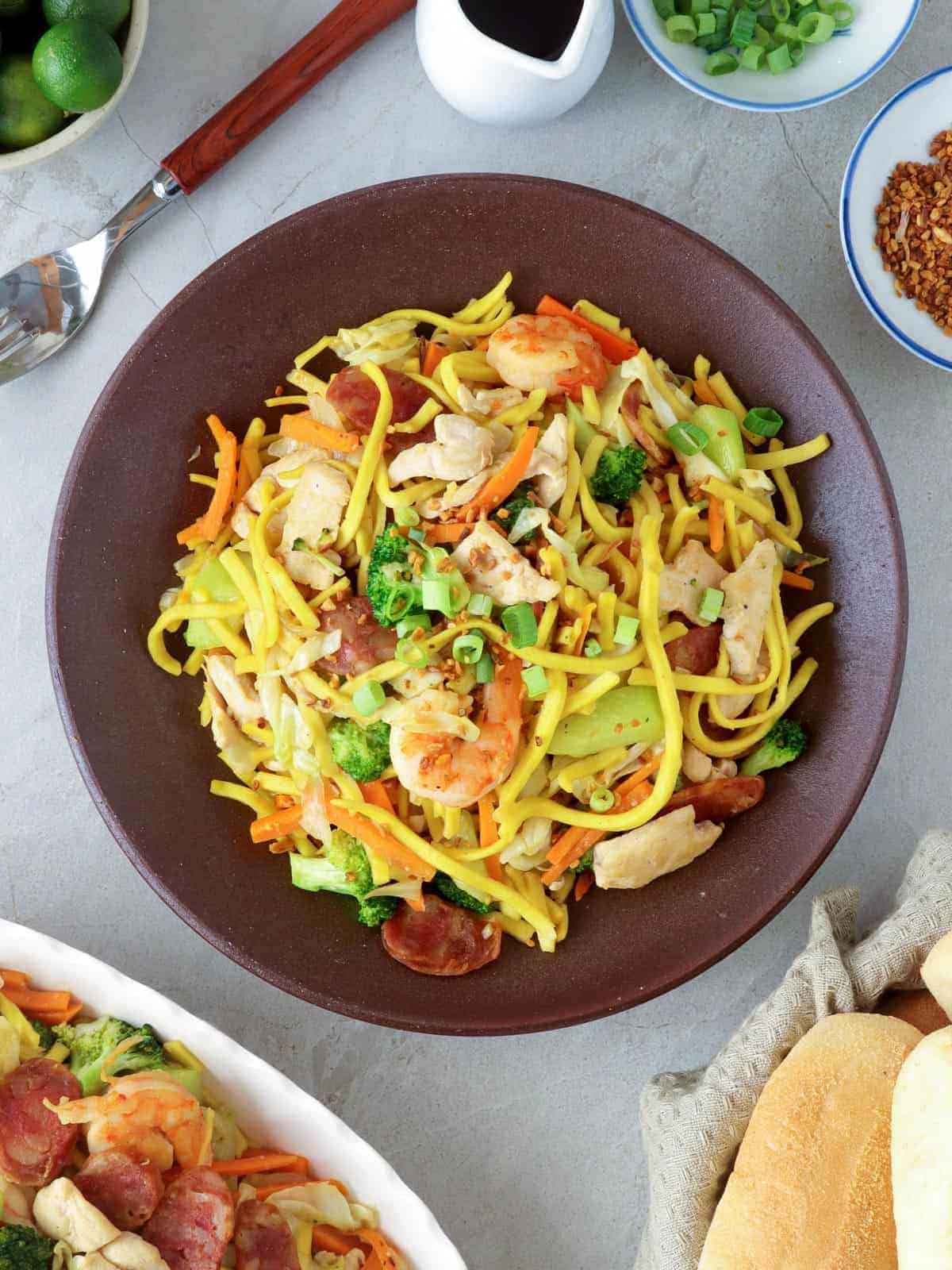
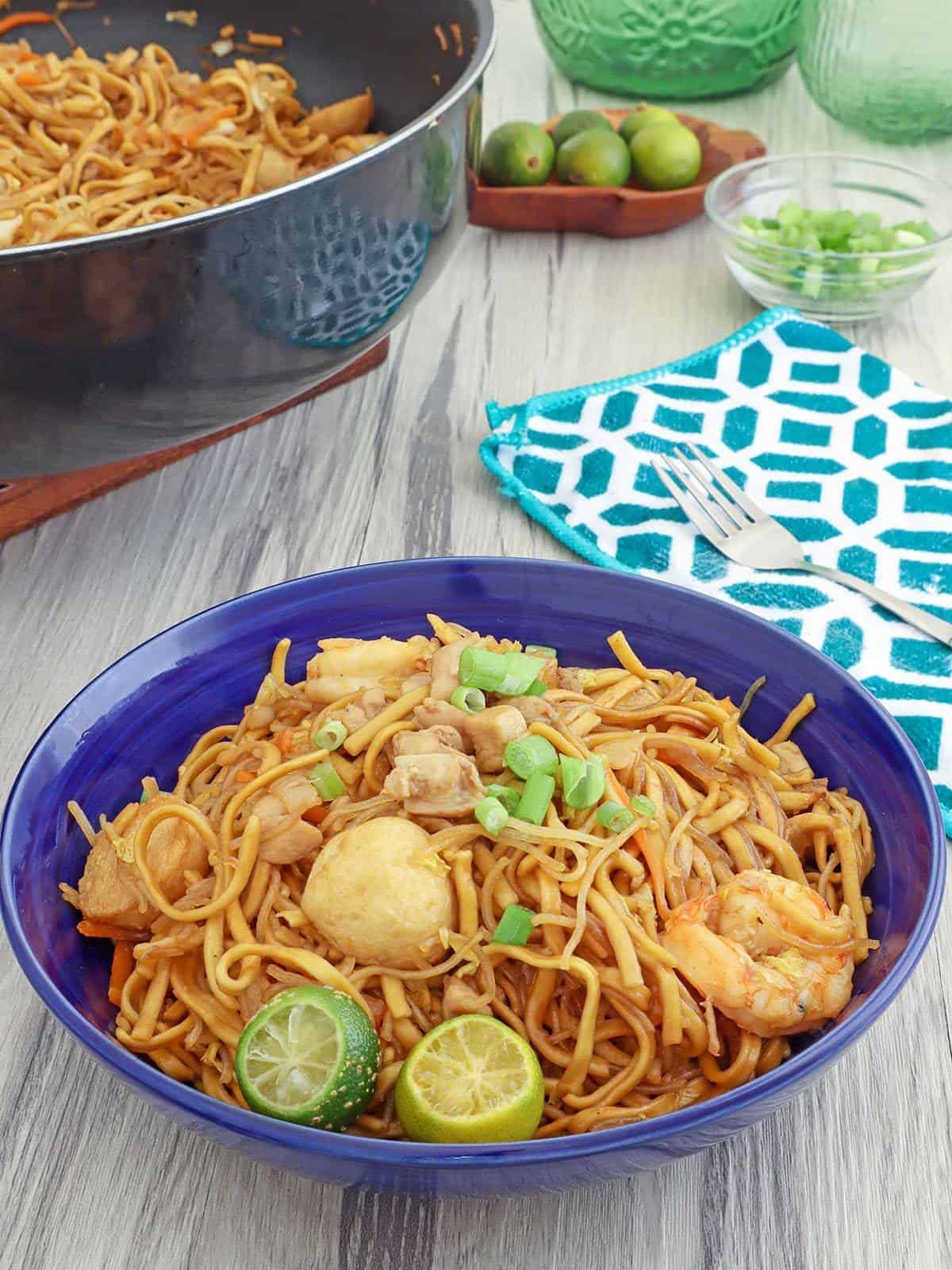
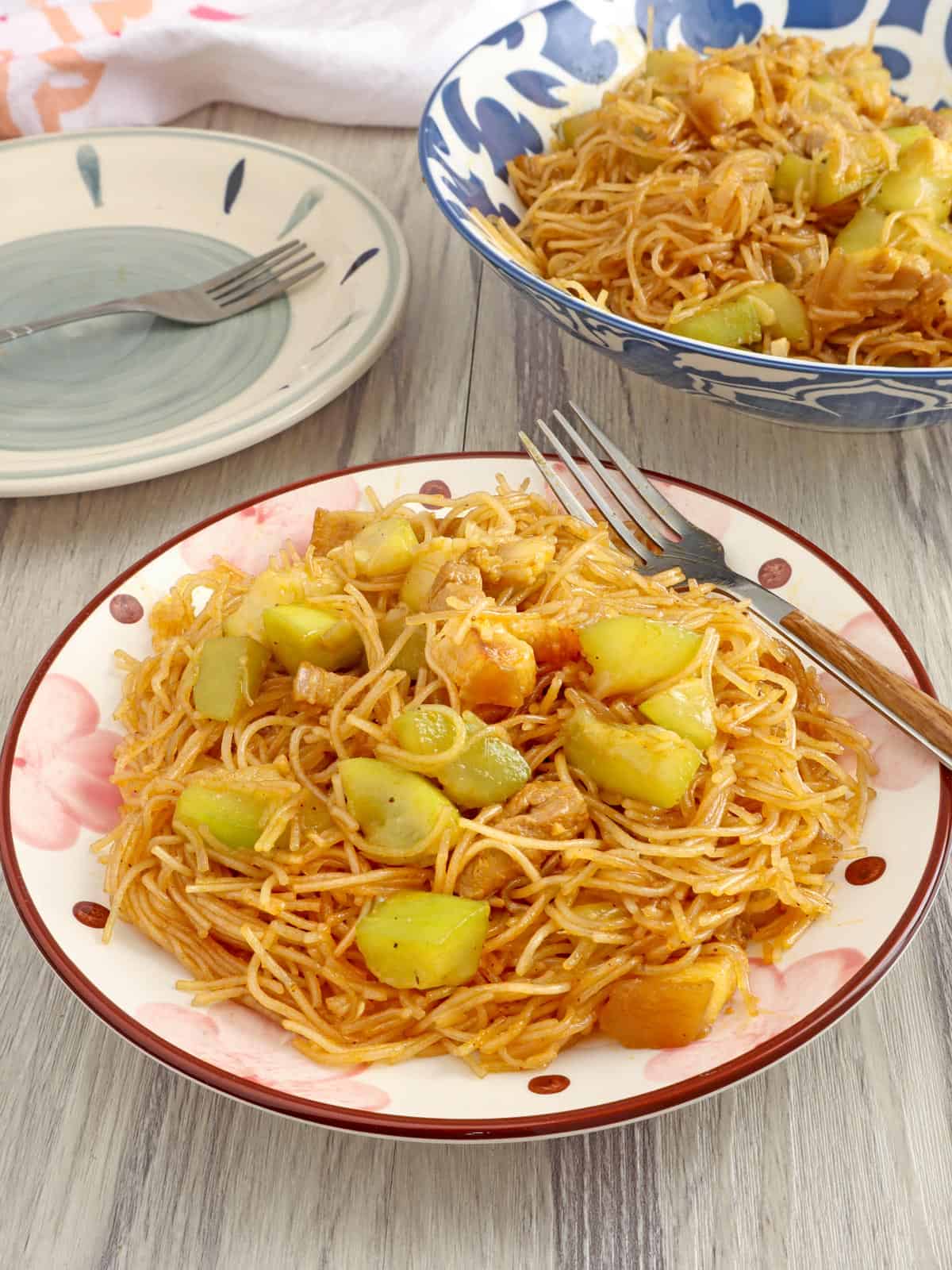
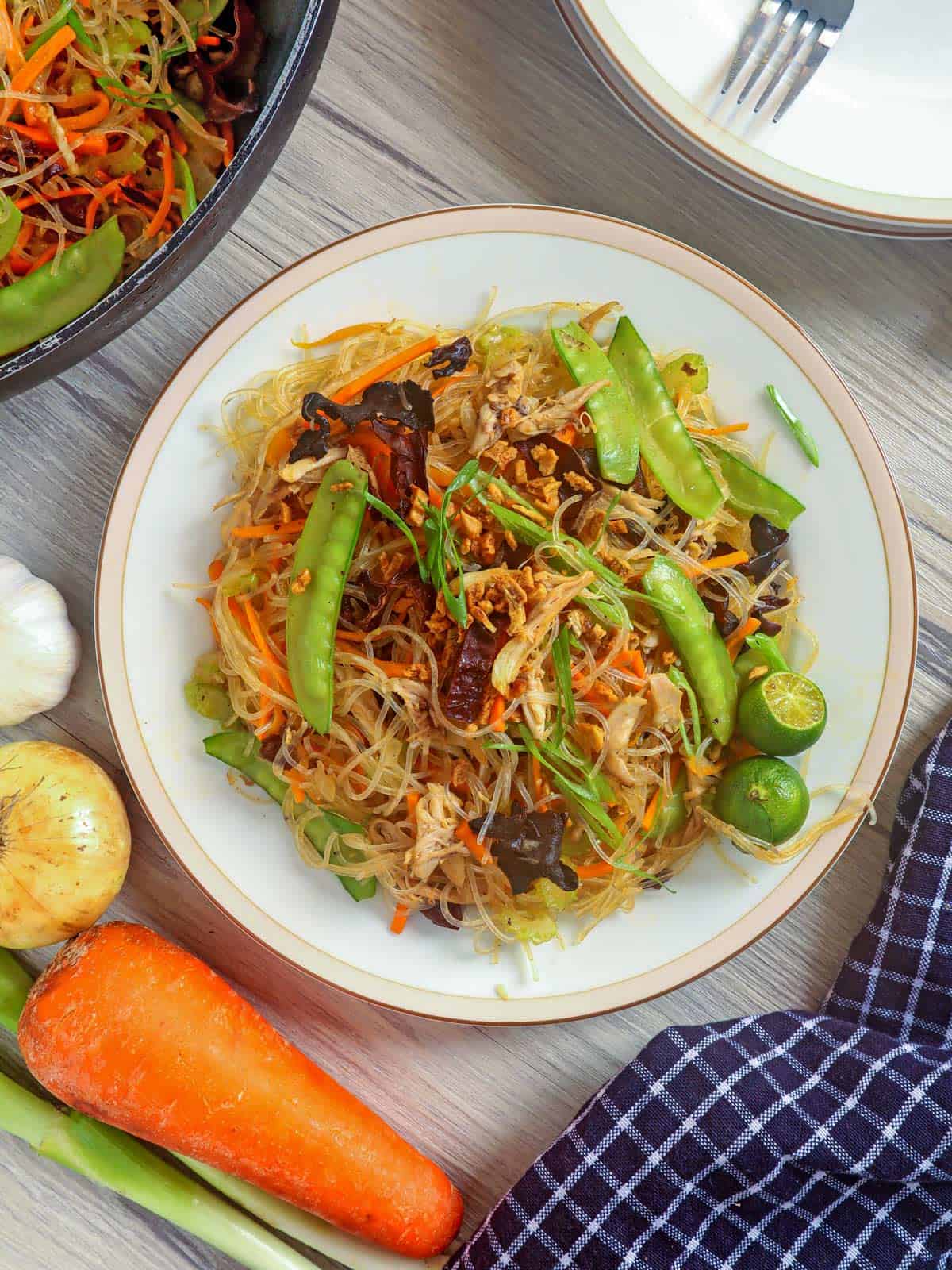

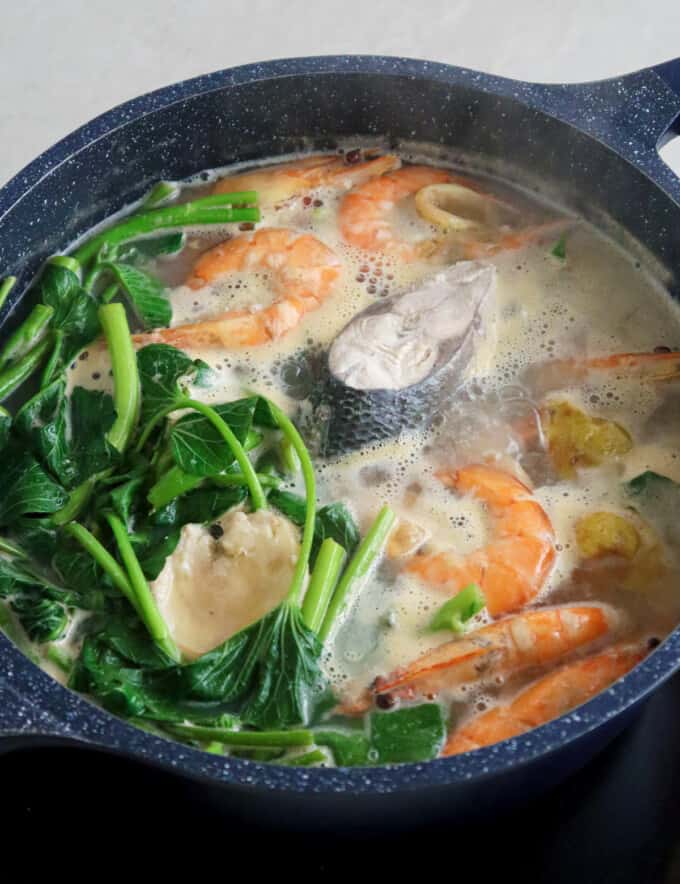

Anne says
Perfect!
Lorna Ebdao Namoc says
I love it
Yvonne Oabel says
Easy to understand. Now I know how to cook pansit bihon. Thanks.
Lalaine Manalo says
You're welcome. Happy cooking!
Rose says
Thank you for sharing your recipe 😘😘
I will try it soon
kc says
hello,
i wanted to try this. my concern is, what do you mean of chicken stock? can i make it thru from scratch like chicken knorr cubes dissolve in boiling water? or does it mean i have to buy it like a box packaging? thank you.
Lisa says
oops Lumpia I meant. Stupid auto correct lol
Lisa says
I love pancit. I may not be filipino but when I grew up i had filipino friends and at their birthday parties I loved the pancit and lumping. It wasn't until I grew up I found out what they were called so I can make them for myself. I prefer regular pork over sausages so I cut it up real thing and I used the frozen already cooked shrimp to save me some time. I love your recipe it's under my favorites.
Oliver Lim says
Cooking noodles like pancit canton and bihon has always been my nightmare, coz either hilaw sya or over cooked, with your reciepie, its so helpful when I followed it religiously, my behon turned out well.
And with the number of serving, it always confuse me. How do you compute the number of servings, Like how do you compute the ratio of food per person or per group? Thank you 🙂 and more Power 🙂
Angie says
I really love this recipe! Before I don’t know how to cook pansit every time I tried, it didn’t turn good but with your recipe I can make it perfectly 😋 Thanks for sharing.
Lalaine Manalo says
I'm happy to hear that, Angie!
Fern says
May I ask, if putting in the pork hamonado do I prepare it like the recipe link you shared and then add it to the pancit? Pineapple and all? Just not sure how to prepare the pork and add it to the pancit. Thank you for your help.
Lalaine says
Hello Fern,
The pork hamonado I use in this recipe are pork sausages, kind of like sweet longanisa. Please don't use the pork hamonado recipe I have, it's different. I know it's confusing but I guess in the Philippines we call food hamonado when they're sweet. Here is the link to the sausages I use http://martinpurefoods.com/mpmain/332m-mp-ss-pork-hamonado/
Cham says
If I don't have access to hamonado or the Chinese sausage, what else can I substitute?
Lalaine says
I like to use the sausages to add a touch of sweet, savory flavors and I think some chopped up barbecue pork or even cooked pork tocino will be good substitutes. If not available, you can just omit 🙂